René Magritte
The Treachery of Images
10 Feb - 05 Jun 2017
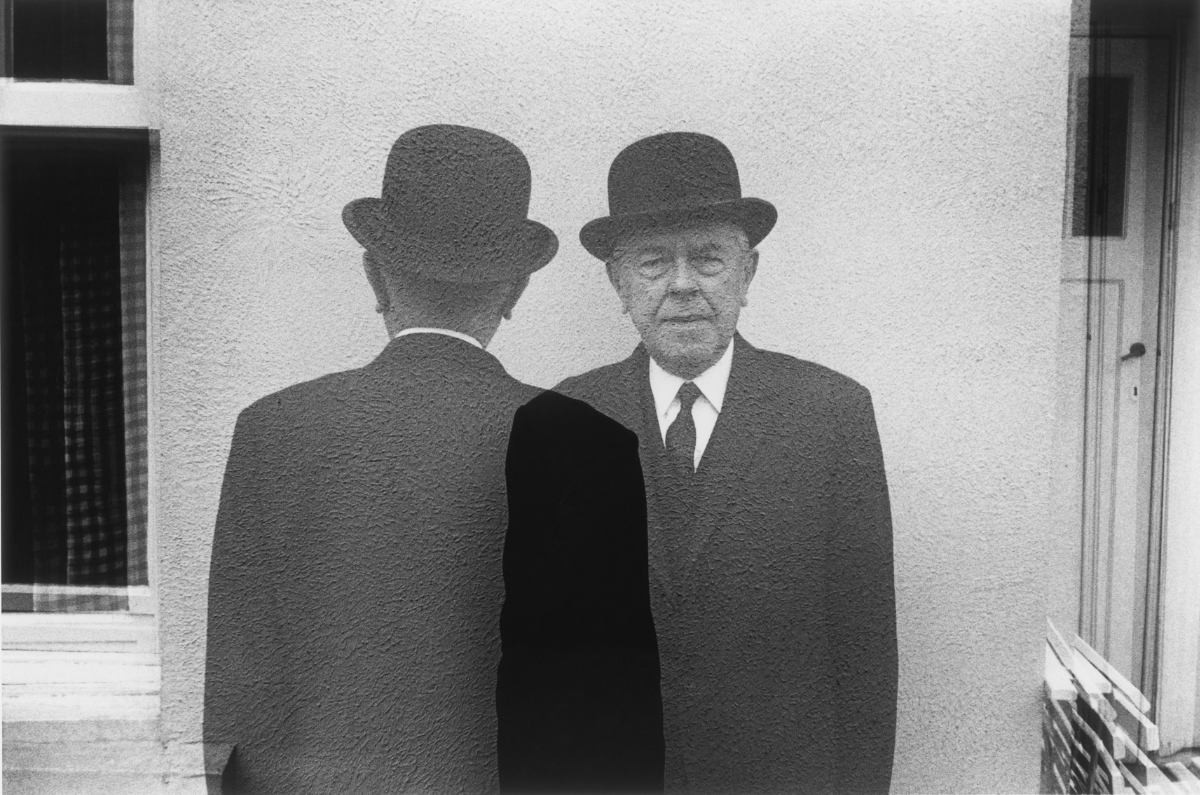
Duane Michals, Magritte (Coming and Going), 1965 © Duane Michals, Courtesy of DC Moore Gallery, New York
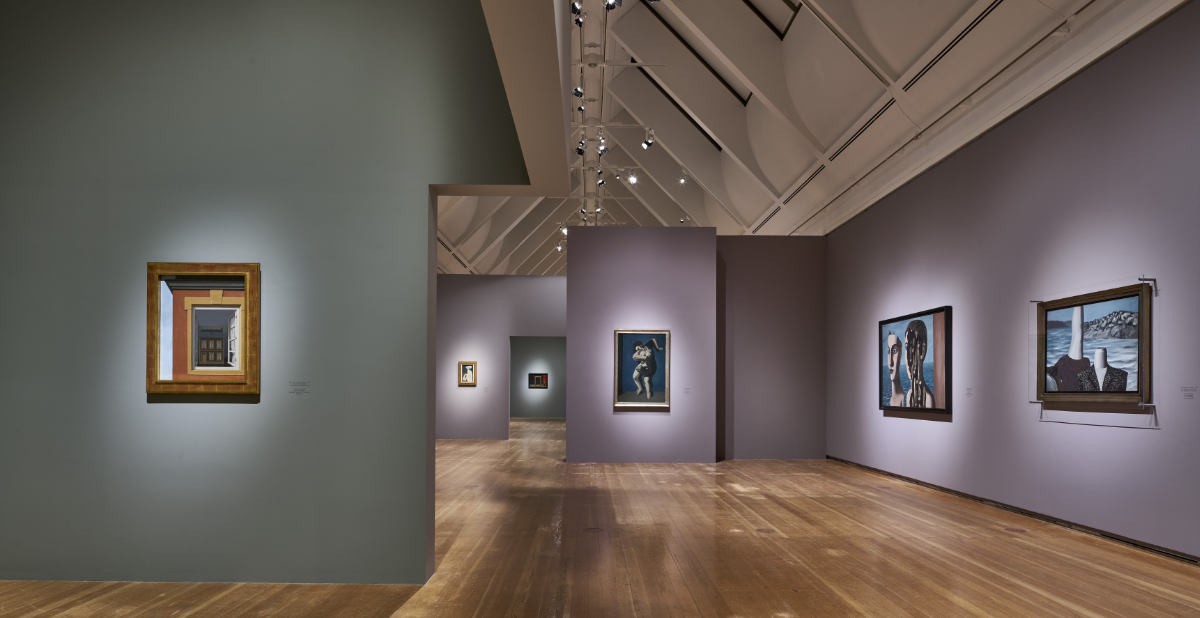
MAGRITTE. THE TREACHERY OF IMAGES, exhibition view © Schirn Kunsthalle Frankfurt, 2017, Photo: Norbert Miguletz
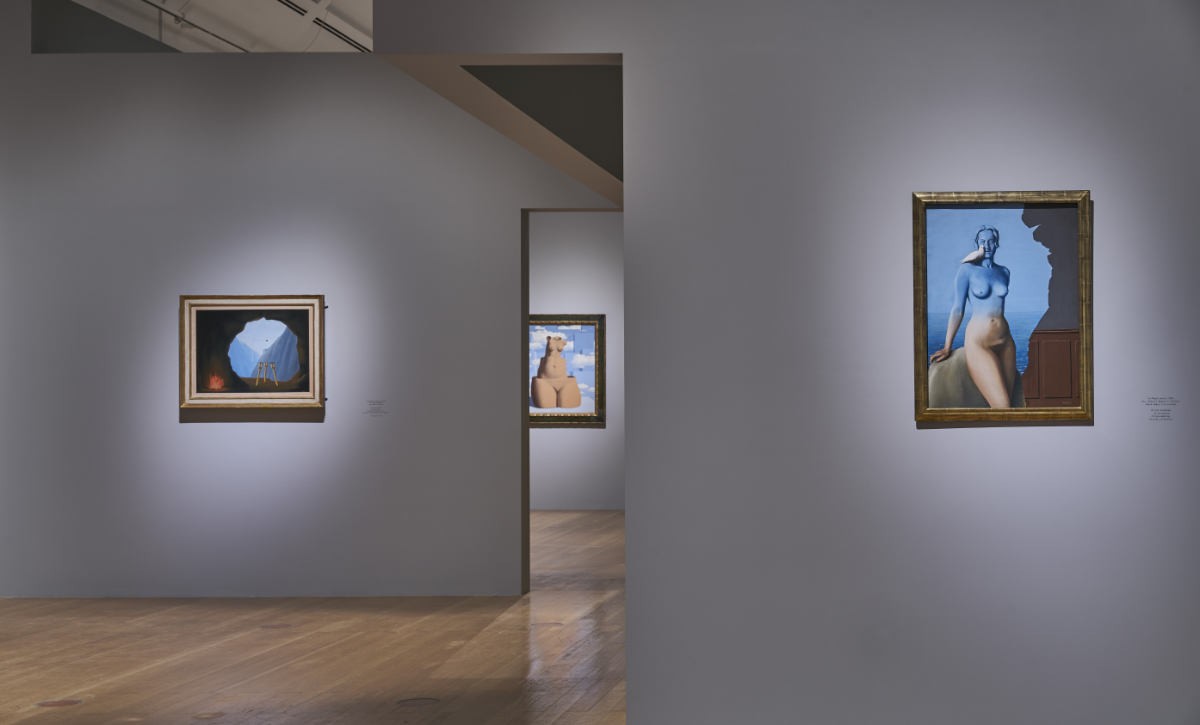
MAGRITTE. THE TREACHERY OF IMAGES, exhibition view © Schirn Kunsthalle Frankfurt, 2017, Photo: Norbert Miguletz
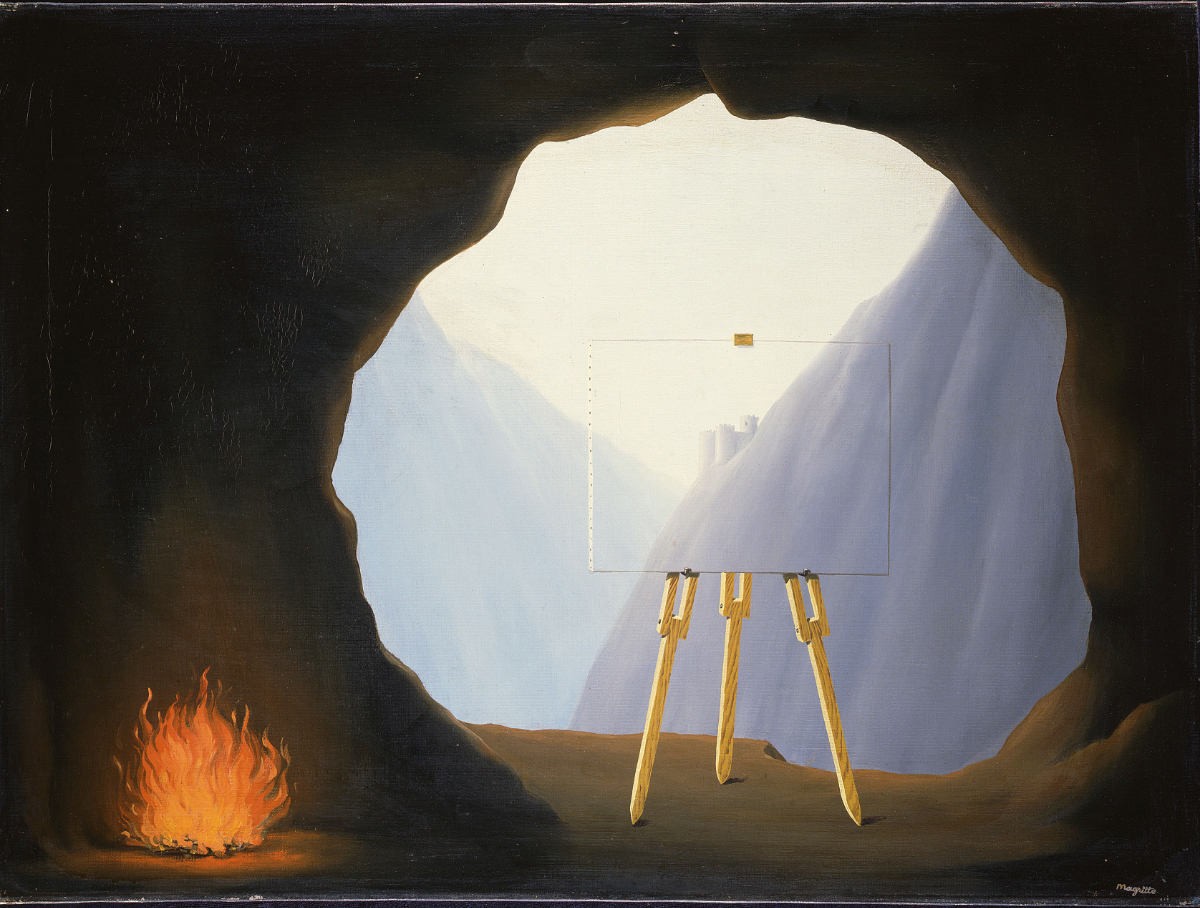
René Magritte, La Condition Humaine, 1935, Oil on canvas, 54 x 73 cm, Norfolk Museums Service (accepted by HM Government in lieu of tax and allocated to Norwich Castle Museum & Art Gallery) © VG Bild-Kunst, Bonn 2017
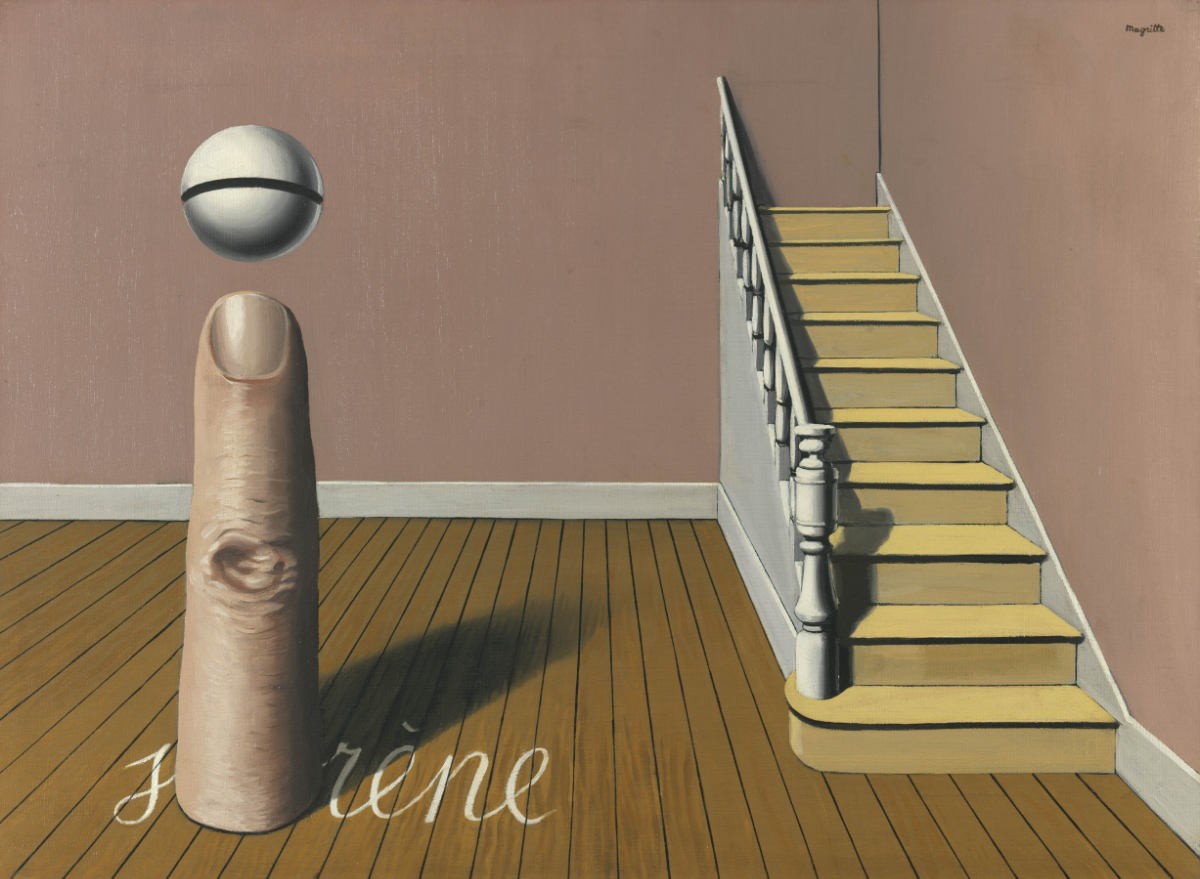
René Magritte, La lecture défendue, 1936, Oil on canvas, 54,4 x 73,4 cm, Royal Museums of Fine Arts of Belgium, Brussels, Photo: J. Geleyns - Ro scan / Charly Herscovici, with his kind authorization – c/o SABAM-ADAGP, 2016 © VG Bild-Kunst, Bonn 2017
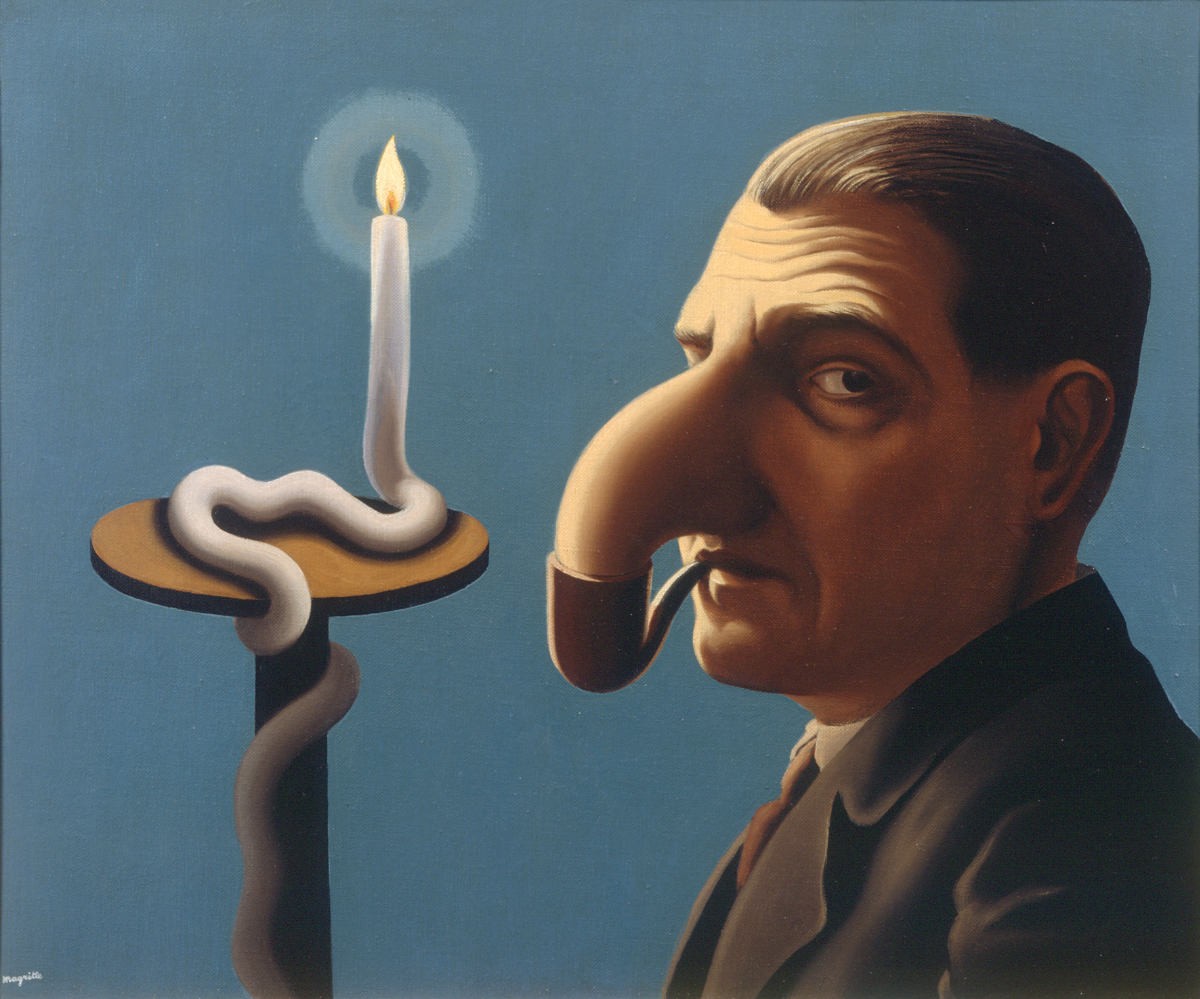
René Magritte, La Lampe philosophique, 1936, Oil on canvas, 46 x 55 cm, Private collection © VG Bild-Kunst, Bonn 2017
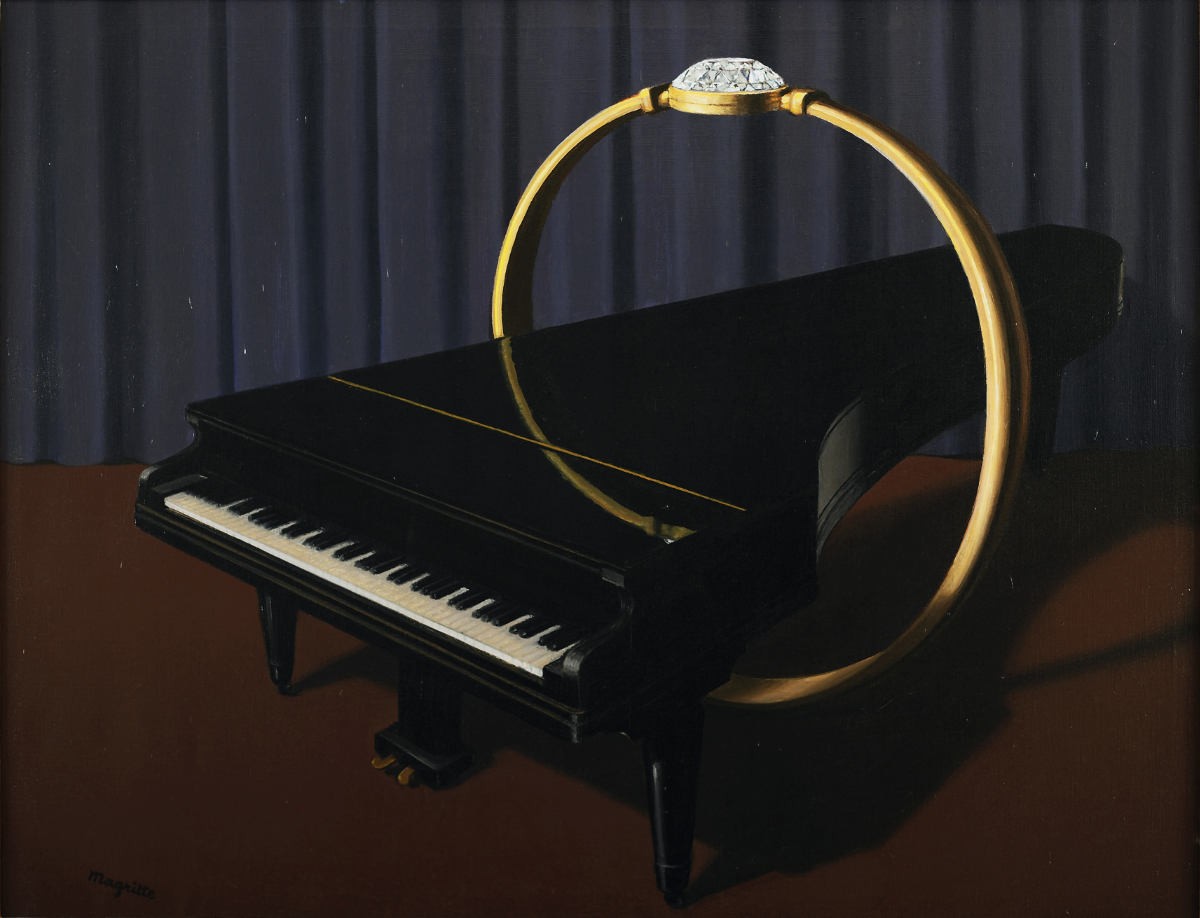
René Magritte, La main heureuse, 1953, Oil on canvas 50,5 x 65 cm, Collection Diane SA, Photo: Nicolas Giudice – Objectif- Fontaine –l’Evêque (Belgium) © VG Bild-Kunst, Bonn 2017
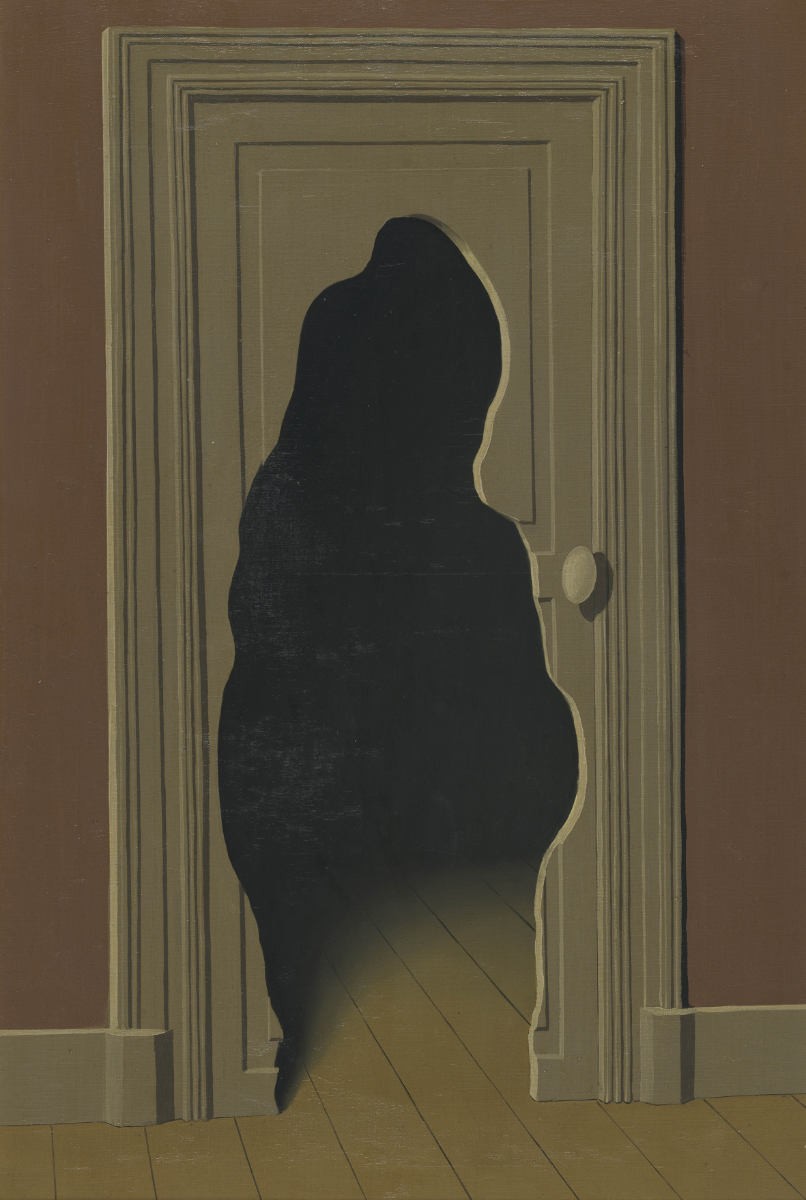
René Magritte, La réponse imprévue, 1933, Oil on canvas, 82 x 54,4 cm, Royal Museums of Fine Arts of Belgium, Brussels, Photo: J. Geleyns - Ro scan / Charly Herscovici, with his kind authorization – c/o SABAM-ADAGP, 2016 © VG Bild-Kunst, Bonn 2017
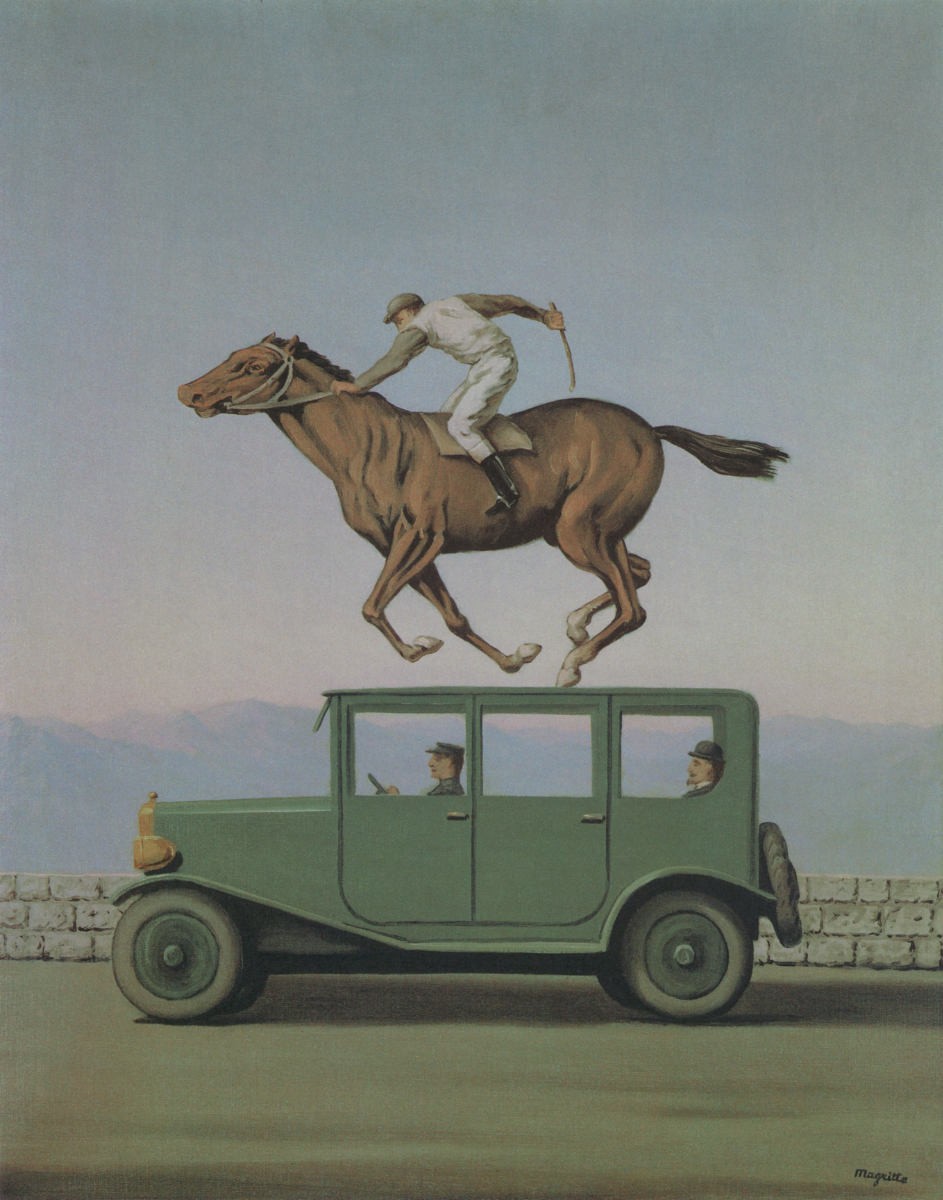
René Magritte, La colère des dieux, 1960, Oil on canvas, 80 x 70 cm, Private collection © VG Bild-Kunst, Bonn 2017
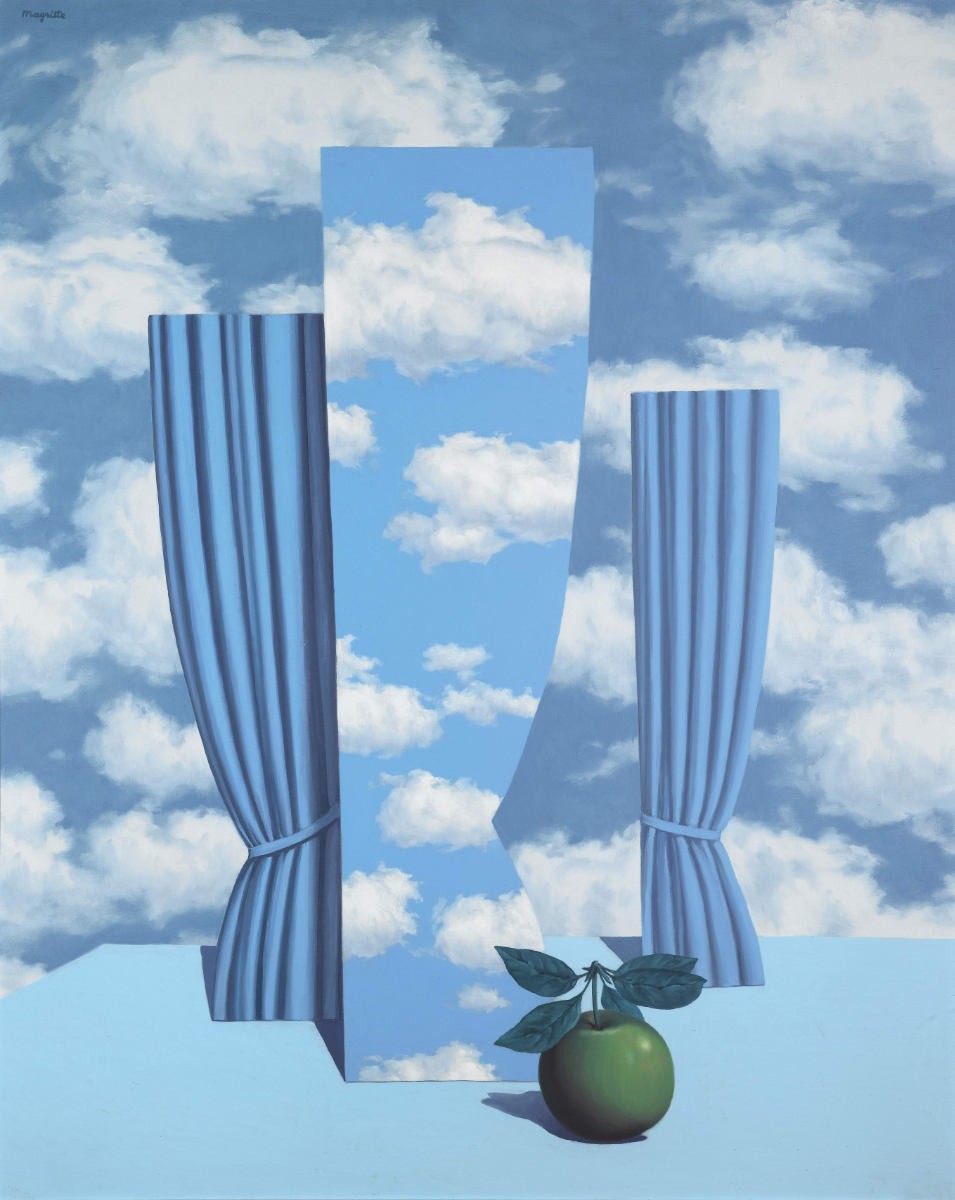
René Magritte, Le beau monde, 1962, Oil on canvas, 100 x 81 cm, Private collection, Courtesy Sotheby’s © VG Bild-Kunst, Bonn 2017
RENÉ MAGRITTE
The Treachery Of Images
10 February – 5 June 2017
Curators: Didier Ottinger
The painter René Magritte (1898–1967) was a conjurer of enigmatic paintings. In a concentrated solo exhibition devoted to the great Belgian Surrealist, the Schirn Kunsthalle Frankfurt explores his relationship to the philosophical currents of his time. Magritte did not see himself as an artist, but rather as a thinking human being who conveyed his thoughts through his painting. Throughout his life he sought to imbue painting with meaning equal to that of language. Driven by his curiosity and his affinities with some of the leading philosophers of his age, such as Michael Foucault, he created a remarkable body of work and developed an altered view of the world that is reflected in a unique combination of masterfully precise painting and conceptual processes. The exhibition sheds light on Magritte’s philosophical investigations in five chapters. His word pictures reflect his fundamental views on the relationship between language and visual imagery. Other essential pictorial formulas are concerned with legends and myths associated with the invention and definition of painting. The quasi-scientific method Magritte applied in his painting bears witness to his distrust of simple answers and simplistic realism. The Schirn is presenting Magritte’s masterpieces of enigmatic painting from the 1920s to the 1960s, among them his emblematic selfportrait entitled La Lampe philosophique (The Philosopher’s Lamp) (1936), La Condition Humaine (The Human Condition) (1948), Les Mémoires d’un Saint (The Memoires of a Saint) (1960), Le Beau Monde (The Beautiful World) (1962), and L’Heureux Donateur (The Happy Donor) (1966). The exhibition features some 70 artworks, including numerous masterpieces from major international museums as well as public and private collections, among them the Musée Magritte in Brussels, the Kunstmuseum Bern, the Dallas Museum of Art, the Menil Collection in Houston, the Tate in London, the Metropolitan Museum of Art in New York, the Museum of Modern Art in New York, the National Gallery of Victoria in Melbourne, and the National Gallery of Art in Washington, D.C. It is the first large-scale solo show of Magritte in Germany for twenty years.
The exhibition “Magritte: The Treachery of Images” presented at the Schirn Kunsthalle Frankfurt is supported by Bank of America Merrill Lynch.
Dr. Philipp Demandt, Director of the Schirn Kunsthalle Frankfurt, says of the exhibition: “By virtue of his unique visual language, René Magritte is one of the most popular and influential artists of the twentieth century. Major exhibitions devoted to the Belgian Surrealist are rare events, and thus I am all the more delighted that with “Magritte. The Treachery of Images” the Schirn Kunsthalle Frankfurt is presenting the first large-scale solo show in Germany for twenty years. Visitors can look forward to an exhibition that illuminates Magritte’s pictorial formulas against the background of the philosophical discourse of his time–an experience for both the eye and the mind.”
Didier Ottinger, exhibition curator, comments: “There was a hierarchy stultified by centuries of philosophy that ranked composers and poets above painters, and words far above images. From Plato to Hegel, philosophy dismissed all figurative representation as confusion of the senses, considering poetry to be the most accomplished vector of the Spirit. René Magritte never put up with the expression “stupidity of painters” to which the Parisian Surrealists subscribed, relentlessly asserting the intellectual dignity of his art with his paintbrush, first against poets and later against philosophers. Magritte developed a kind of painting that postulated a relationship of equivalence between vision and thought, between the visual image and the word as the expression of thinking and knowing.
René Magritte is one of the most important painters of the twentieth century. In contrast to the methods based on dream and automatism postulated by the Parisian Surrealists associated with André Breton, Magritte’s unparalleled visual language was grounded in the specifically Belgian manifestation of Surrealism, which called for the application of a dialectic method and scientific thinking. The expression “the stupidity of painters” that was commonly heard near the end of the nineteenth century, reflects the philosophical opinion that poetry ranked above painting and words above images. Magritte was unwilling to accept that premise. He defended the intellectual dignity of his art as long as he lived and sought to elevate his painting initially to the level of poetry and eventually to that of philosophy. Pursuing a quasi-scientific approach, the artist imbued his visual language with the objectivity of a vocabulary. His motifs–pipe, apple, melon, candle, curtain, flame, shadow, fragment, and hat, etc–recur in various different combinations and contexts in his paintings. Magritte painted pictures whose meanings were intended to be universal. He viewed his painting as a kind of equation in which he ascribed to each work the solution to a “problem” in accordance with a dialectic principle. In La Condition humaine (The Human Condition) (1935), which is featured in the exhibition, Magritte focused on the problem of the window establishing links between inside and outside, the seen and the hidden, nature and culture, picture and landscape. The dialectical pairs that structure the world of his imagination appear in painting after painting: natural and artificial, interior and exterior, impulsive and rational.
Magritte’s first word pictures were produced about the time of his move from Brussels to France in 1927. The Schirn is presenting one version of his most famous painting from this group of works, La Trahison des images (Ceci n’est pas une pipe) (The Treachery of Images [This is not a Pipe]) (1927). The painting shows a pipe rendered in his typical precise style and beneath it the words: “This is not a pipe.” Magritte articulated his doubts about the amenability of reality to depiction in this contradictory confrontation between text and image and thus questioned the validity of perception in general. In his witty and amusing theoretical treatise entitled Les Mots et les Images (Words and Images) (1929) consisting of 18 pairs of words and images published in the journal La Révolution Surrealiste, the painter questioned the complex relationships between the object, its name, and its visual representation. Magritte’s word paintings are his answer to the defamation of painting and an expression of his ambition to establish the equivalence of images and words as means of expressing thought processes and knowledge.
Magritte’s interest in philosophical theories grew intensified beginning in the 1950s. He read the works of Martin Heidegger and Maurice Merleau-Ponty and sought personal contact with contemporary philosophers. His favorite discussion partners were the Heidegger expert Alphonse De Waelhens and Chaim Perelman, the famous philosopher of law. Magritte tested his ideas about painting in a dialogue with these thinkers and took advantage of every opportunity to question them. His interest in philosophy provided him with arguments for the complex character of his paintings and helped him justify his painting on a scientific basis. He repeatedly turned his attention to ancient myths regarding the invention and essence of painting, such as Plato’s Allegory of the Cave and the painting competition between Zeuxis und Parrhasius as described by Pliny the Elder. The perfectly painted curtain, the motif with which Parrhasius eventually wins the contest in the fable, is one of the most frequently recurring motifs in Magritte’s paintings, such as Les Mémoires d’un saint (The Memoires of a Saint) (1960) or Le Beau Monde (The Beautiful World) (1962). They bear witness to the degree of reflection with which the artist ironized his own illusionistic brilliance and his ability to create realistic trompe-l’oeil images. Other persistently recurring constants are Magritte’s painted collages, including in particular those of fragmented bodies, as in Les Marches de l’été (The Marches of Summer) (1938). Here as well he harnesses his knowledge of ancient legends in service of his painterly contemplation of the themes of beauty, reality, and the creative process. Although Magritte’s relationships with philosophers were always friendly, they often talked at cross-purposes in terms of content. Neither De Waelhens nor Perelman granted him the noble philosophical status he demanded–for that he had to wait until his encounter with the great post-Structuralist Michel Foucault. It was he who finally granted Magritte the recognition he deserved at an advanced age and dedicated the famous essay entitled Ceci n’est pas une pipe to him posthumously in 1973.
“Magritte: The Treachery of Images”. Exhibition produced by the Centre Pompidou, Musée national d’art moderne, Paris, in cooperation with the Schirn Kunsthalle Frankfurt.
The exhibition is under the joint high patronage of the Federal President Joachim Gauck and His Majesty the King of the Belgians.
The Treachery Of Images
10 February – 5 June 2017
Curators: Didier Ottinger
The painter René Magritte (1898–1967) was a conjurer of enigmatic paintings. In a concentrated solo exhibition devoted to the great Belgian Surrealist, the Schirn Kunsthalle Frankfurt explores his relationship to the philosophical currents of his time. Magritte did not see himself as an artist, but rather as a thinking human being who conveyed his thoughts through his painting. Throughout his life he sought to imbue painting with meaning equal to that of language. Driven by his curiosity and his affinities with some of the leading philosophers of his age, such as Michael Foucault, he created a remarkable body of work and developed an altered view of the world that is reflected in a unique combination of masterfully precise painting and conceptual processes. The exhibition sheds light on Magritte’s philosophical investigations in five chapters. His word pictures reflect his fundamental views on the relationship between language and visual imagery. Other essential pictorial formulas are concerned with legends and myths associated with the invention and definition of painting. The quasi-scientific method Magritte applied in his painting bears witness to his distrust of simple answers and simplistic realism. The Schirn is presenting Magritte’s masterpieces of enigmatic painting from the 1920s to the 1960s, among them his emblematic selfportrait entitled La Lampe philosophique (The Philosopher’s Lamp) (1936), La Condition Humaine (The Human Condition) (1948), Les Mémoires d’un Saint (The Memoires of a Saint) (1960), Le Beau Monde (The Beautiful World) (1962), and L’Heureux Donateur (The Happy Donor) (1966). The exhibition features some 70 artworks, including numerous masterpieces from major international museums as well as public and private collections, among them the Musée Magritte in Brussels, the Kunstmuseum Bern, the Dallas Museum of Art, the Menil Collection in Houston, the Tate in London, the Metropolitan Museum of Art in New York, the Museum of Modern Art in New York, the National Gallery of Victoria in Melbourne, and the National Gallery of Art in Washington, D.C. It is the first large-scale solo show of Magritte in Germany for twenty years.
The exhibition “Magritte: The Treachery of Images” presented at the Schirn Kunsthalle Frankfurt is supported by Bank of America Merrill Lynch.
Dr. Philipp Demandt, Director of the Schirn Kunsthalle Frankfurt, says of the exhibition: “By virtue of his unique visual language, René Magritte is one of the most popular and influential artists of the twentieth century. Major exhibitions devoted to the Belgian Surrealist are rare events, and thus I am all the more delighted that with “Magritte. The Treachery of Images” the Schirn Kunsthalle Frankfurt is presenting the first large-scale solo show in Germany for twenty years. Visitors can look forward to an exhibition that illuminates Magritte’s pictorial formulas against the background of the philosophical discourse of his time–an experience for both the eye and the mind.”
Didier Ottinger, exhibition curator, comments: “There was a hierarchy stultified by centuries of philosophy that ranked composers and poets above painters, and words far above images. From Plato to Hegel, philosophy dismissed all figurative representation as confusion of the senses, considering poetry to be the most accomplished vector of the Spirit. René Magritte never put up with the expression “stupidity of painters” to which the Parisian Surrealists subscribed, relentlessly asserting the intellectual dignity of his art with his paintbrush, first against poets and later against philosophers. Magritte developed a kind of painting that postulated a relationship of equivalence between vision and thought, between the visual image and the word as the expression of thinking and knowing.
René Magritte is one of the most important painters of the twentieth century. In contrast to the methods based on dream and automatism postulated by the Parisian Surrealists associated with André Breton, Magritte’s unparalleled visual language was grounded in the specifically Belgian manifestation of Surrealism, which called for the application of a dialectic method and scientific thinking. The expression “the stupidity of painters” that was commonly heard near the end of the nineteenth century, reflects the philosophical opinion that poetry ranked above painting and words above images. Magritte was unwilling to accept that premise. He defended the intellectual dignity of his art as long as he lived and sought to elevate his painting initially to the level of poetry and eventually to that of philosophy. Pursuing a quasi-scientific approach, the artist imbued his visual language with the objectivity of a vocabulary. His motifs–pipe, apple, melon, candle, curtain, flame, shadow, fragment, and hat, etc–recur in various different combinations and contexts in his paintings. Magritte painted pictures whose meanings were intended to be universal. He viewed his painting as a kind of equation in which he ascribed to each work the solution to a “problem” in accordance with a dialectic principle. In La Condition humaine (The Human Condition) (1935), which is featured in the exhibition, Magritte focused on the problem of the window establishing links between inside and outside, the seen and the hidden, nature and culture, picture and landscape. The dialectical pairs that structure the world of his imagination appear in painting after painting: natural and artificial, interior and exterior, impulsive and rational.
Magritte’s first word pictures were produced about the time of his move from Brussels to France in 1927. The Schirn is presenting one version of his most famous painting from this group of works, La Trahison des images (Ceci n’est pas une pipe) (The Treachery of Images [This is not a Pipe]) (1927). The painting shows a pipe rendered in his typical precise style and beneath it the words: “This is not a pipe.” Magritte articulated his doubts about the amenability of reality to depiction in this contradictory confrontation between text and image and thus questioned the validity of perception in general. In his witty and amusing theoretical treatise entitled Les Mots et les Images (Words and Images) (1929) consisting of 18 pairs of words and images published in the journal La Révolution Surrealiste, the painter questioned the complex relationships between the object, its name, and its visual representation. Magritte’s word paintings are his answer to the defamation of painting and an expression of his ambition to establish the equivalence of images and words as means of expressing thought processes and knowledge.
Magritte’s interest in philosophical theories grew intensified beginning in the 1950s. He read the works of Martin Heidegger and Maurice Merleau-Ponty and sought personal contact with contemporary philosophers. His favorite discussion partners were the Heidegger expert Alphonse De Waelhens and Chaim Perelman, the famous philosopher of law. Magritte tested his ideas about painting in a dialogue with these thinkers and took advantage of every opportunity to question them. His interest in philosophy provided him with arguments for the complex character of his paintings and helped him justify his painting on a scientific basis. He repeatedly turned his attention to ancient myths regarding the invention and essence of painting, such as Plato’s Allegory of the Cave and the painting competition between Zeuxis und Parrhasius as described by Pliny the Elder. The perfectly painted curtain, the motif with which Parrhasius eventually wins the contest in the fable, is one of the most frequently recurring motifs in Magritte’s paintings, such as Les Mémoires d’un saint (The Memoires of a Saint) (1960) or Le Beau Monde (The Beautiful World) (1962). They bear witness to the degree of reflection with which the artist ironized his own illusionistic brilliance and his ability to create realistic trompe-l’oeil images. Other persistently recurring constants are Magritte’s painted collages, including in particular those of fragmented bodies, as in Les Marches de l’été (The Marches of Summer) (1938). Here as well he harnesses his knowledge of ancient legends in service of his painterly contemplation of the themes of beauty, reality, and the creative process. Although Magritte’s relationships with philosophers were always friendly, they often talked at cross-purposes in terms of content. Neither De Waelhens nor Perelman granted him the noble philosophical status he demanded–for that he had to wait until his encounter with the great post-Structuralist Michel Foucault. It was he who finally granted Magritte the recognition he deserved at an advanced age and dedicated the famous essay entitled Ceci n’est pas une pipe to him posthumously in 1973.
“Magritte: The Treachery of Images”. Exhibition produced by the Centre Pompidou, Musée national d’art moderne, Paris, in cooperation with the Schirn Kunsthalle Frankfurt.
The exhibition is under the joint high patronage of the Federal President Joachim Gauck and His Majesty the King of the Belgians.
